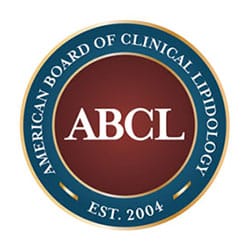When treating a particularly large blocked artery, doctors often find it beneficial to implant a stent. Much like stents used in the heart, a peripheral stent helps maintain the opening in a treated artery to maintain healthy blood flow.
The expert peripheral stent specialists at St. Louis Heart and Vascular are skilled at performing peripheral stents.
If you have a peripheral angioplasty procedure on the horizon or have had one in the past and want to know if a stent can help prolong your results, call the nearest location to schedule your consultation.
Peripheral Stents Q&A
What is a peripheral stent?
A peripheral stent is a tiny tube made of a wire mesh that your peripheral artery doctor inserts into an artery during a peripheral angioplasty. The stent is enlarged during the initial inflation of the angioplasty balloon and left in place to help keep the artery open.
What conditions do stents treat?
One of the most common stent procedures the cardiologists at St. Louis Heart and Vascular perform is peripheral angioplasty for peripheral artery disease, a condition affecting nearly 5 percent of Americans over the age of 50. However, your doctor may recommend a stent for a variety of other conditions, including:
- Renovascular hypertension
- Narrowing of the large arteries due to atherosclerosis
- Carotid artery stenosis
- Coronary artery disease
- Subclavian artery blockages
When is a peripheral stent necessary?
Not all angioplasty procedures need or are eligible for a stent. Some arteries, for example, are not so blocked as to require the use of a stent for recovery. Your doctor will determine whether you need a stent after examining your blockage and reviewing your medical history.
What can I expect during a peripheral stent procedure?
At St. Louis Heart and Vascular, the physicians generally install peripheral stents at the same time as the initial angioplasty procedure. During the procedure, your physician numbs the area of your body requiring the angioplasty and uses an ultrasound or X-ray to map out your artery.
Once your physician identifies the proper artery, they cut a small incision into the area and insert a catheter into the artery. This catheter helps guide a thin wire with a balloon and stent at the tip through your artery to the blockage site. Once in place, your physician inflates the balloon at the blockage, displacing fat and other buildup and opening your artery.
It’s during this initial inflation that your physician implants the stent, expanding it at the same time as the balloon so it lodges itself against the walls of your artery.
Though having a peripheral stent installed is a minimally invasive procedure, your physician may ask you to stay overnight to monitor your recovery and make sure the procedure went as planned.
If you have a history of peripheral artery disease or other arterial blockage and what to know more about the benefits of stenting, contact one of the St. Louis Heart and Vascular locations.
Peripheral Stents Available at These Locations
We offer Peripheral Stents at the following St. Louis Heart and Vascular locations. Contact us to schedule your appointment today.
Bridgeton Office
- (314) 741-0911
- 3550 McKelvey Rd.
Bridgeton, MO 63044 - Location Info
Christian Hospital Office
- (314) 741-0911
- 11155 Dunn Road, Suite 304E, MOB #1
St. Louis, MO 63136 - Location Info
Des Peres Hospital Office
- (314) 741-0911
- 2325 Dougherty Ferry Road, Suite 203
St. Louis, MO 63122 - Location Info
Granite City Office
- (314) 741-0911
- 2120 Madison Ave., Suite 101
Granite City, IL 62040 - Location Info
St. Charles Office
- (314) 741-0911
- 1551 Wall Street, Suite 410
St. Charles, MO 63303 - Location Info
Town & Country Office
- (314) 741-0911
- 3009 N. Ballas Rd, Suite 100B
St. Louis, MO 63131 - Location Info
Wentzville Office
- (314) 741-0911
- 105 Creekside Office Dr.
Wentzville, MO 63385 - Location Info












